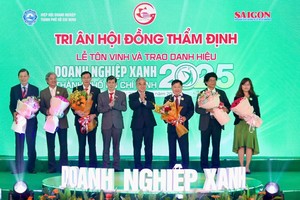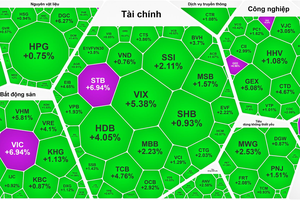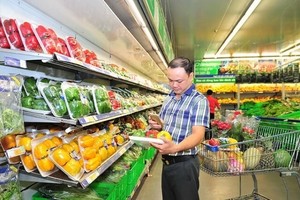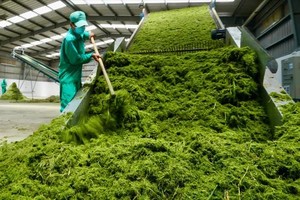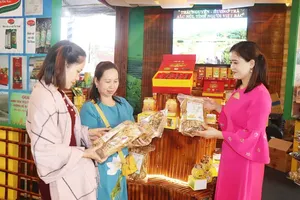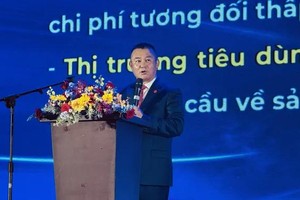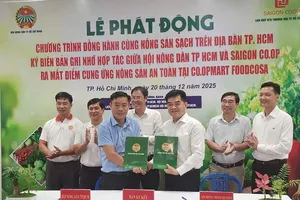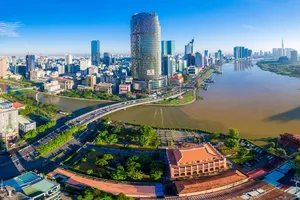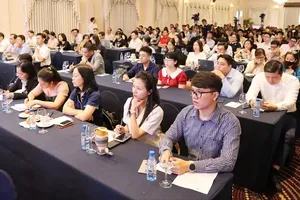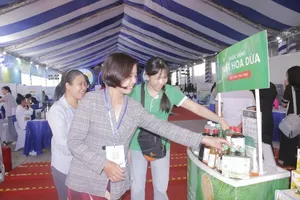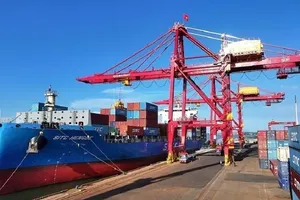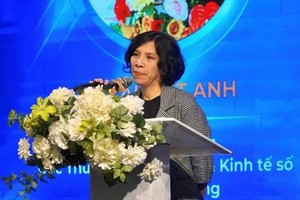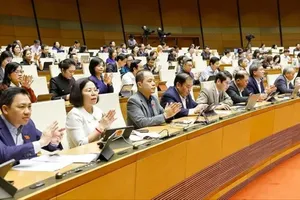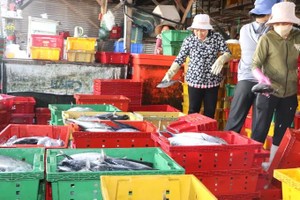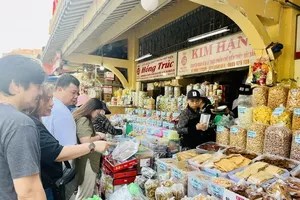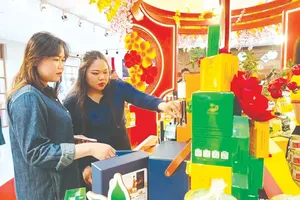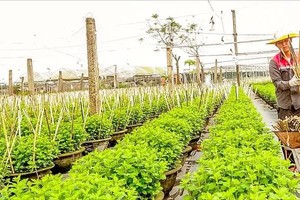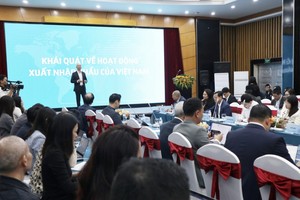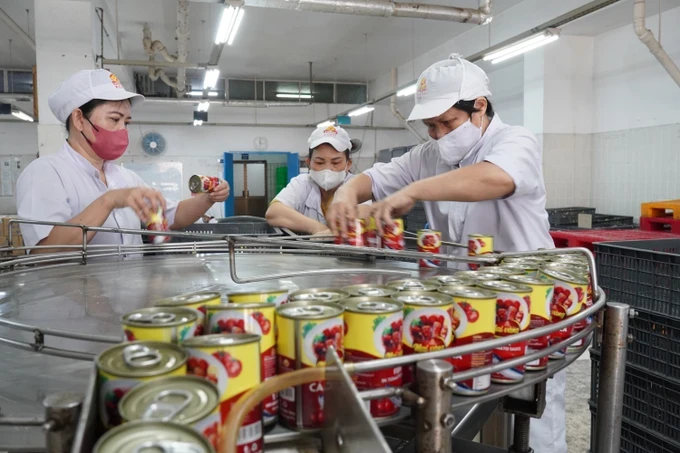
In a press briefing at the beginning of 2025, Deputy Prime Minister cum Minister of Foreign Affairs Bui Thanh Son highlighted economic diplomacy as a key success of the previous year.
This included leveraging partnerships with major players in areas like digital and green transformation, semiconductor technology, and artificial intelligence; capitalizing on regional investment shifts, attracting high-quality FDI and new-generation ODA with more favorable terms and extended durations; and expanding markets for tourism and labor.
Critically, it also involved forecasting and formulating response strategies to complex and unpredictable global economic developments, including the potential for a global trade war.
Given the increasingly unpredictable nature of global trade, the Vietnamese Government proactively diversified its partners and markets throughout 2024, focusing on high-potential, untapped regions to reduce reliance on traditional markets perceived as vulnerable.
This proactive approach was evident in Prime Minister Pham Minh Chinh’s official visit to the United Arab Emirates (UAE) in late October 2024, during which the two nations agreed to elevate their relationship to a Comprehensive Partnership. They also signed the Vietnam-UAE Comprehensive Economic Partnership Agreement (CEPA), with the UAE committing to eliminate tariffs on numerous key Vietnamese export sectors upon CEPA’s implementation.
This represents a watershed moment for Vietnam, granting access to the lucrative Gulf market and a relatively new sector: the Halal market. Halal encompasses food, beverages, pharmaceuticals, cosmetics, and other products that adhere to Islamic dietary laws.
Furthermore, during the Prime Minister’s official visit to Brazil in November 2024, the two nations also upgraded their relationship to a Strategic Partnership, ushering in a new era of bilateral cooperation. Both pledged to increase bilateral trade to US$10 billion by 2025 and $15 billion by 2030.
There is growing concern that Vietnam may also face US tariffs, given the former’s trade surplus with the latter. Such a scenario would significantly impact Vietnam’s trade and economy, particularly its export-oriented model. However, some experts argue that the critical issue is not when or how the US might impose tariffs, but rather Vietnam’s capacity to negotiate a “win-win” agreement with the US.
Professor Ha Ton Vinh, a US Republican and former advisor of late President R.W Reagan, predicts US tariffs on Vietnam by late 2025 or early 2026. However, he emphasizes the strong US-Vietnam partnership, suggesting that Vietnam’s ability to offer mutually beneficial trade solutions is key.
He highlights the robust $100-$120 billion annual bilateral trade, driven by complementary economies and preferential tariffs benefiting both Vietnamese exports and US FDI.
Prof Vinh suggests that, in the short term, Vietnam could purchase more US goods to reduce the trade deficit. However, he acknowledges that some US products are not in demand in Vietnam, while others are prohibitively expensive.
“While Vietnam’s recent purchase of US aircraft is a positive step, the value of these deals (just over $100 million per aircraft) is insufficient to significantly address the trade imbalance, particularly given the US expectation of a 50-percent reduction in Vietnam’s current trade surplus”, he argues.
Therefore, Professor Vinh believes Vietnam must explore alternative solutions, such as purchasing US technology and utilizing US personnel for operational services and technology consulting. He notes that Vietnam has already begun pursuing this approach through cooperative agreements with US tech giants.
Marketing and Market Development Director Vuong Ngoc Dung of Saigon Cosmetics JSC commented that tariff-driven economic leverage creates supply chain disruptions, impacting raw material imports, production costs, and ultimately retail pricing.
Vietnamese businesses are facing heightened international competition due to sanctions. This requires improved product quality and marketing strategies. While challenging, it also offers market expansion opportunities in unaffected countries. Vietnamese manufacturers must maximize advantages from their domestic market while developing international markets, sharing resources and expertise.
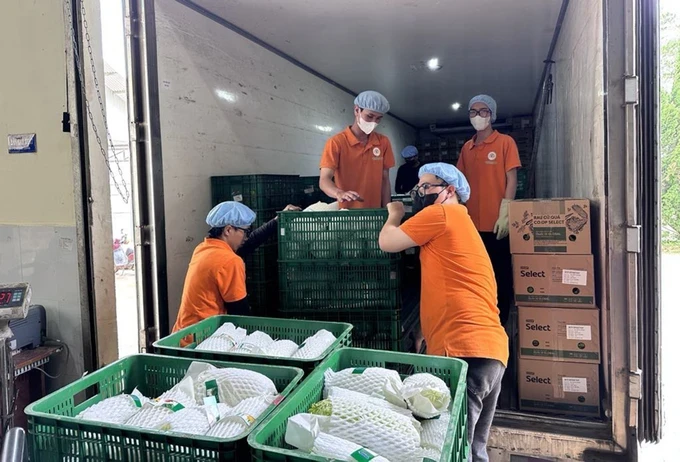
Chairwoman Nguyen Thi Thu of the Board of Directors of Kim Anh Food Production JSC voiced that businesses relying heavily on imported raw materials face rising input costs due to significantly longer ordering and delivery times, coupled with 15-to-20-percent price increases. This necessitates adjusting selling prices to offset increased production and operational expenses, severely impacting competitiveness against larger foreign rivals with lower cost structures.
Conversely, companies utilizing primarily domestic raw materials can maintain stable pricing, shielded from these external pressures. While the US export market share may be affected long-term, current short-term impacts are minimal due to existing export orders predating the current administration. Proactively, companies are increasing the use of domestic raw materials to mitigate rising input costs and diversifying into new markets like Brazil and Mexico to lessen dependence on the US.
General Director Pham Thi Xuan Huong of OPC Pharmaceutical JSC informed that amidst US-China tariff disputes and the threat of a trade war, OPC has not experienced significant short-term impacts. Furthermore, OPC sees this as an opportunity to refocus resources on developing markets in the Middle East and ASEAN, rather than prioritizing the US and China. Drawing on past experience, OPC’s primary export market was previously Eastern Europe.
Following the Russia-Ukraine conflict, which negatively impacted OPC’s market share, the company rapidly adapted by expanding into other regions to pursue new opportunities and mitigate risks. OPC is also developing a Research Center and exploring the use of AI in pharmaceutical research to optimize product efficacy and safety.
Deputy Minister of Agriculture and Rural Development Phung Duc Tien stated that while US tariffs on Canada, Mexico, and China will impact the global economy, their effect on Vietnam’s agricultural, forestry, and fishery exports to the US should be limited.
The US is a major market for these Vietnamese products, with 2024 exports reaching $13.8 billion, or 21.8 percent of Vietnam’s total export turnover in these sectors. The comprehensive strategic partnership and strong bilateral relationship between Vietnam and the US suggest continued facilitation of these exports, even with potential new tariff policies. Numerous opportunities should, therefore, remain.
However, complacency is unwarranted. Vietnam must prepare for potential trade conflicts and expanded tariffs. Recent government discussions acknowledge the growing risk of a trade war, requiring comprehensive response strategies. Joining the global market is inherently difficult, demanding increasing efforts to maintain market share through high-quality, environmentally sustainable production practices.
